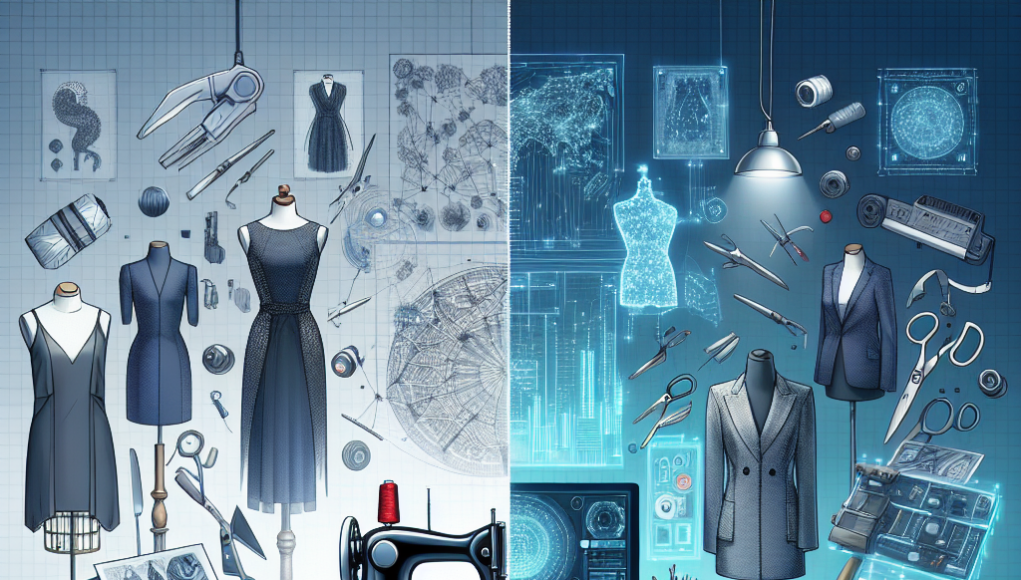In the vibrant world of fashion, the intersection of technology and design is creating a new era of innovation and style. As designers increasingly incorporate advanced technologies into their creative processes, the boundaries of what is possible in fashion are continually expanding. This article explores how technology is reshaping fashion design, bridging traditional craftsmanship with digital advancements, and ultimately transforming the industry.
The Fusion of Innovation and Style in Fashion
In recent years, the fusion of technology and fashion has given rise to a new wave of innovative designs that push the boundaries of traditional aesthetics. Designers are experimenting with smart textiles, which integrate electronics into fabrics, enabling garments to change color, monitor health, or even charge devices. This blend of functionality and style is not only redefining what clothing can do but also how it interacts with our daily lives.
3D printing is another technological breakthrough that is revolutionizing the fashion industry. By allowing designers to create intricate patterns and structures that would be impossible to achieve by traditional means, 3D printing is opening up new realms of creativity. This technology enables the production of customized apparel on demand, reducing waste and supporting sustainable fashion practices.
Augmented reality (AR) and virtual reality (VR) are also making their mark on the fashion scene. These technologies are being used to create immersive shopping experiences, allowing customers to try on clothes virtually before making a purchase. This not only enhances the consumer experience but also helps brands reach a global audience by bridging the gap between online and in-store shopping.
The integration of artificial intelligence (AI) in fashion design is another exciting development. AI algorithms can analyze vast amounts of data to predict trends, optimize supply chains, and even generate new design concepts. This data-driven approach is enabling designers to create collections that are more aligned with consumer preferences, ultimately resulting in more successful product launches.
Wearable technology is yet another domain where fashion and technology converge. From smartwatches to fitness trackers, these devices are becoming increasingly stylish, blending seamlessly with traditional fashion elements. Designers are now tasked with creating tech-infused accessories that are not only functional but also aesthetically pleasing.
The collaboration between tech companies and fashion brands is further accelerating innovation in the industry. By combining their expertise, these partnerships are leading to the development of cutting-edge products that are transforming the way we perceive and interact with fashion. As this synergy continues to evolve, the line between technology and fashion is becoming increasingly blurred, paving the way for a future where innovation and style are inseparable.
How Tech is Shaping Modern Fashion Design
The impact of technology on modern fashion design is profound, fundamentally altering the way designers conceptualize and create their collections. One of the most significant changes is the shift towards digital design tools, which allow for greater precision and creativity in the design process. Software programs enable designers to experiment with colors, patterns, and textures in a virtual environment, reducing the need for physical prototypes and speeding up the development cycle.
Digital fabrication techniques, such as laser cutting and CNC machining, are also transforming the fashion industry. These methods allow for the creation of complex designs with a high degree of accuracy, enabling designers to experiment with new forms and materials. As a result, fashion is becoming more architectural and sculptural, with designers pushing the limits of what is possible in garment construction.
Technology is also playing a crucial role in making fashion more sustainable. Innovations such as fabric recycling, waterless dyeing, and biodegradable materials are helping reduce the environmental impact of the fashion industry. By leveraging technology, designers are finding new ways to create beautiful garments that are both eco-friendly and ethically produced.
The rise of e-commerce and social media has also reshaped the fashion landscape, providing designers with new platforms to showcase their work and connect with consumers. Online marketplaces and social media channels have democratized fashion, allowing emerging designers to reach a global audience without the need for traditional retail infrastructure.
Artificial intelligence is further influencing modern fashion design by providing insights into consumer preferences and behavior. By analyzing data from social media, online reviews, and sales figures, AI algorithms can identify emerging trends and help designers make informed decisions about their collections. This data-driven approach is enabling brands to stay ahead of the curve and meet the ever-changing demands of the fashion market.
Finally, technology is enhancing the personalization of fashion. With tools such as body scanning and virtual fitting rooms, consumers can now receive custom-fitted garments that match their unique body shape and style preferences. This level of personalization not only improves the shopping experience but also encourages consumer loyalty by offering products that are truly tailored to individual needs.
Bridging Traditional Craft with Digital Advances
While technology is undoubtedly transforming fashion design, it is doing so in a way that complements and enhances traditional craftsmanship. Many designers are finding innovative ways to integrate digital tools with age-old techniques, resulting in garments that are both cutting-edge and artisanal.
One example of this synergy is the use of digital embroidery machines, which allow for the creation of intricate patterns with the precision of traditional hand embroidery. By combining the speed and accuracy of digital technology with the artistry of handcraft, designers are able to produce garments that maintain the integrity of traditional techniques while embracing modern innovation.
Similarly, digital knitting machines are enabling designers to create complex knitwear patterns that would be impossible to achieve by hand. These machines allow for the production of seamless garments with intricate textures and designs, offering a modern twist on traditional knitting techniques.
The integration of technology in textile dyeing is another area where traditional craft is being enhanced. Digital printing techniques enable designers to produce vibrant, detailed prints on fabric with minimal environmental impact. This not only preserves the aesthetic qualities of traditional dyeing methods but also supports sustainable fashion practices.
Technology is also playing a role in preserving traditional crafts that are at risk of being lost. By documenting and digitizing traditional techniques, designers can ensure that these skills are passed down to future generations. This digital archive serves as a resource for designers seeking to incorporate traditional elements into their work, ensuring that cultural heritage is preserved in a modern context.
The collaboration between artisans and technologists is further bridging the gap between traditional craft and digital advances. By working together, these experts are developing new methods and materials that combine the best of both worlds. This collaborative approach is leading to the creation of innovative designs that are rooted in tradition yet forward-thinking in their execution.
Ultimately, the intersection of technology and traditional craft in fashion design is leading to a more diverse and dynamic industry. By embracing both innovation and heritage, designers are creating garments that are not only beautiful but also meaningful, reflecting a rich tapestry of cultural influences and technological advancements.
As technology continues to evolve, its impact on fashion design will only become more pronounced. The fusion of innovation and style is creating a new landscape where traditional craftsmanship and digital advancements coexist harmoniously. By embracing these changes, the fashion industry is poised to enter a new era of creativity and sustainability, where the possibilities are limitless and the only constant is change.










